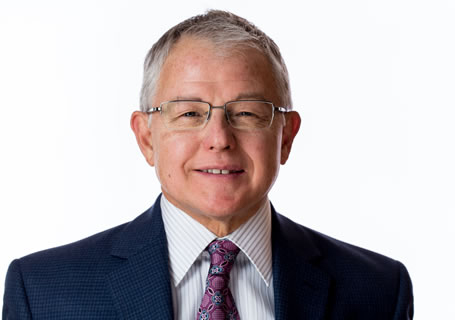When a person does not have to face the consequences of their actions and behaviors, you have the conditions where accountability does not exist.
Roger Fails to Do What He Commits to Do
Melissa faced a real challenge with her new employee Roger. Even though he clearly could do his job, Roger often failed to meet his commitments. Melissa was in a quandary because Roger’s 60-day review was fast approaching.
When she asked for my advice on what to do, I asked a simple question: “How do you normally communicate with your employees?”
“By email,” was her response. I asked why she used this method. “Because all my employees are younger and prefer that method.”
“Do other members of your team fail to meet their commitments to you?” Her answer was what I expected. “Yes… but Robert is the worst offender.”
I will share with you a simple, 3-part technique that good leaders use to strengthen accountability quickly when someone fails to deliver repeatedly. After Mellissa began to use this tool, members of her team stopped making idle promises to her and to each other.
Before I explain the tool, let’s do a quick review of what full accountability means. This is important because even though we professionals talk about wanting more accountability, very few can tell me the true meaning of this important yet often missing trait.
Accountability is the Gold Standard of Behavior
Many people believe they are being accountable when they are not. We mistake being responsible as being accountable. In a moment you will understand why.
Full and true accountability has a 2-part definition.
Accountability is…
… Keeping my word, meeting OUR commitments, and taking full ownership for my actions.
Many of us know that its vital to keep our word, yet we make idle promises. Many of us realize we must meet a commitment we make. Yet, we will fail to meet a commitment someone else makes on our behalf.
I.e. If your employer makes a commitment to deliver 5-star service, you must do everything you can to deliver it to every customer – inside and out. You cannot opt out!
I.e. If the executive team makes a policy you disagree with, you must follow that policy without fail!
Notice this first part of the definition uses “ownership” and not “responsibility.” When you are responsible only, you leave a backdoor for you to opt out.
I.e. When you rent a car or an apartment, you do not take the same care of the asset that you would if you owned the car.
I.e. You are loyal to your team, because you know them. however, you diss your employer to close friends because, “I work for a huge uncaring conglomerate.”
Let’s explore part 2.
Accountability is…
… Accepting reality without finding fault, placing blame, using excuses, or hiding from the truth.
When events go as planned we humans love to take credit. But, when events go south what do we usually do? Blame anyone or anything that makes a convenient scapegoat. We offer excuses to get out of trouble hoping the other person will give us a pass. We humans like to deny that we made a mistake or did something wrong.
I.e. “I didn’t do it. I wasn’t there. No one saw me do it.” This is a refrain we all use when we find ourselves in hot water.
This is the toughest aspect of being accountable. Putting an end to excuses, denial, and hubris.
I see accountability as a tightrope that you and I walk each day. A path that we fall off frequently. Why? Because you and I are human. It’s human nature to have the urge to deny, blame, and make excuses.
BUT…
The person committed to staying accountable notices that (s)he fell of the tightrope and then gets back on it. You own that you F*ed up. You sincerely apologize for failing to deliver. You stop making excuses. You fix the mess you create.
Not everyone wants to be accountable because we are born without any accountability. We only learn what it is from others if they practice it. And, being accountable is a choice and even people who do know what it looks like, choose to opt out when it suits them.
Are you committed to walking on that tightrope and getting back on when you fall off?
Here is one clue: If you find yourself upset and even angry at my descriptions and examples about what accountability looks like, you have fallen off the tightrope. You are hearing a truth that you do not want to hear.
Eye-to-Eye Technique for Improving Accountability
I have learned from years of experience and research that most normal people don’t lie to you when you look them in the eye. These normal people will do their best to meet a commitment and promise made face-to-face.
When I say “normal,” I refer to 85% of people who don’t know how to or don’t like to lie. (At the end, I will suggest what to do with the 15%, if you have such a person on your team.)
Step 1 – Make face-to Face Contact to Foster Vulnerability
With technology, the practice of meeting face-to-face has diminished significantly while the decline in a lack of accountability has increased dramatically. Notice on social media that criticizers and haters use anonymous names. People who don’t choose to be accountable hide behind technology and other conditions where vulnerability is nonexistent.
The first change Melissa made was to stop using email for important communications. She now sits across the desk from her employees, talking with them face-to-face. In meetings, she walks around the room and she uses direct eye contact as she engages and interacts with employees. Melissa has one employee who works in another building and some of her team work from home. She uses a video communication tool to maintain a face-to-face contact when communicating with these people.
Step 2 – Study Body Language and Related Behavior for Congruency
You do not need to be an expert to read a person’s body language. When someone cannot look you in the eye, it means there is an unaddressed problem. When an employee sits in a meeting with her body turned away from the rest you, she is saying, “I am not with you.” When a coworker does not answer the office phone that is ringing on their desk, the employee does not want to face something. When an employee does not respond to your email, even though you set the expectation to respond within 20 minutes, he is avoiding you or the issue.
When I worked with Melissa, I would point out changes her body language and facial expressions and asked what she was thinking about in that moment. She did not realize that her body and face were telling me a story. At my suggestion, she began to pay more attention to her employees’ facial expressions and body language. Her confidence and accuracy grew very quickly.
She told me, “I see that I need to stay in the moment whenever I am with people. I cannot focus on me; I need to watch them, observe them.”
She also learned that the key to this step is to look for a discrepancy between a person’s words and their body. The person’s truth is in their behavior because “the body never lies.”
Step 3 – Ask for a Verbal and Written Commitment
One mistake that Melissa made was being uncomfortable with asking people for a commitment. She explained, “I feel like I’m being rude.”
I reminded her of the first definition of accountability. “Taking ownership and meeting promises and commitments” only works when a person makes a formal commitment to another person and to themselves. Commitments are almost always met when the promise is made in writing and aloud.
A commitment or promise is not real when there is no emotion attached to it. Asking someone to make a commitment to you aloud and eyeball-to-eyeball activates an emotion. This reaction can range from pride to guilt, to resentment. Whatever the emotional reaction, the person will remember the commitment. This is the reason Step 2 is vital to the success of this tool. You will soon be able to read the emotional response your employee makes through their body and face. When you notice reaction that you did not expect, you can immediately intervene to resolve their unwillingness to commit.
If you fail to do both, people can and will say they made a commitment and yet not follow through. They have no skin in the game; no emotional commitment to act.
Once Melissa learned to do this, she now asks, “What will you commit to doing about this?” When she agrees that the action is appropriate, she asks, “When will this be completed?” Next, she asks, “what do you foresee that will prevent you getting this done by that date?”
When the action and deadline are agreed upon, she has her employee put the commitment in written form, usually in an email. She tracks these deadlines and checks in with her employee regularly to ensure the commitment is being or has been met.
She puts in writing the commitments she makes to her employee, to her boss, and to other leaders. She tracks her commitment so that she won’t miss deadlines or fail to deliver.
A good leader always models the behaviors they want from others.
Back to Roger
After she introduced this tool into her team’s culture, employees’ behaviors shifted quickly. Deadlines and commitments were held sacred. Employees began holding each other accountable to commitment and promises.
However, Mellissa soon realized that Roger was among the 15% of people who have a hard time with the truth. People like Roger know that being agreeable and saying what the other person wants to hear allows them to skate by on their commitments. Melissa noticed that Roger was a master of excuses – he had a plausible reason why he failed to accomplish something every time.
When we discussed her ‘Roger problem,’ I helped Melissa understand one more aspect of accountability: “facing the reality of the situation.” This applied to her actions because she always blindly accepted someone’s excuse for failing to deliver. She was not consistently holding her the employees accountable to their commitments.
Once she stopped accepting excuses and asked for a firm commitment from each employee, they stopped using excuses to hide behind. Except for Roger.
Melissa quickly realized that Roger’s behavior was like a cancer, negatively impacting the cultural norm and corporate value of total honesty. Roger was terminated. As she interviewed people for this opening, she asked questions to assess the candidate’s commitment to being accountable. She found the ideal employee this way.
Not long ago, during her performance evaluation, her supervisor praised her team for being so dependable and meeting deadlines timely. “Your employees always say ‘yes, we can do this’ instead of saying ‘no.’ What’s your secret?”
Melissa shared with her boss this 3-step tool. Today, all the manager and supervisors in her organization are implementing this.
If you see a need for more accountability on your organization and would like to know where to start, book a Conversation with Ron. He will be able to help you start to make a cultural shift.
Ron Rael Leadership Provocateur, is a keynote speaker, consultant, and author.
Follow Ron on Twitter: @leaderexpert
Schedule a Call with Leadership Expert, Ron Rael


